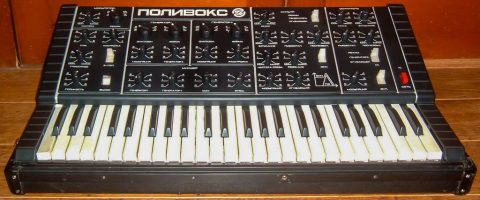Many love modular synths because it’s generally easier to push them beyond the safe, normal boundaries some pre-packaged instruments might try to constrain you inside of. In that vein, you hear many users search for an “extreme” filter to add to their system, looking for one that is unstable when pushed, screams when provoked, and otherwise makes their instrument more aggressive, less predictable, and in general fun to play with (if you’re the type of person who likes to play with knives).

My favorite variation of the classic Polivoks design in the Erica Dtech VCF, which is available both as a kit and assembled. The Dtech is an extension of the original design, supporting variable filter slopes (between one-pole and two-pole modes) as well as variable resonance response between “normal” and “Polivoks” modes. It also has a CV Assign control that can route an incoming control voltage to the cutoff, to resonance, or a mixture of the two.
In the video below, I explore how to push the Dtech filter into unstable, aggressive territory (fun fact: the secret to getting a wider range of sounds out of most sound modifier modules is carefully managing the input level). Contrary to its reputation, a Polivoks-style filter is not just randomly crazy; once you understand how it works, you can control whether you get a cleaner, thinner, tamer sound out of it, or full breaking-apart madness. I focus primarily on using the low pass mode, although I do demonstrate bandpass at the end of the video:
This is the second of two movies on the Erica Dtech VCF that is in my course Learning Modular Synthesis: Eurorack Expansion. The first one covers the basic connections and operation of this filter, including the different slopes. I cover three very different types of filters in that course (particularly compared to the Moog Mother-32’s 4-pole transistor ladder filter): the Erica Dtech, an Oberheim SEM-type multimode state variable filter, and a three-stage highly resonant bandpass filter with its own LFOs for modulation. Expect to see a lot of other filters covered in the weekly updates to this course in the future.

